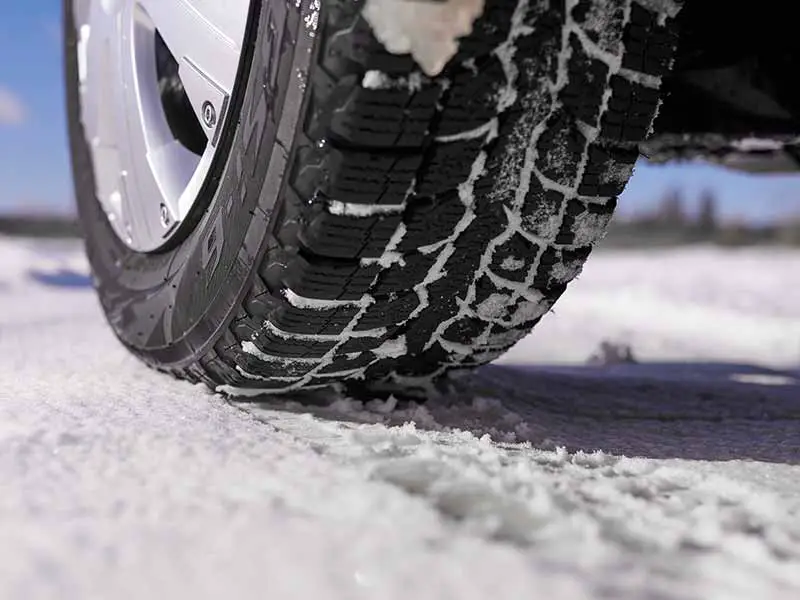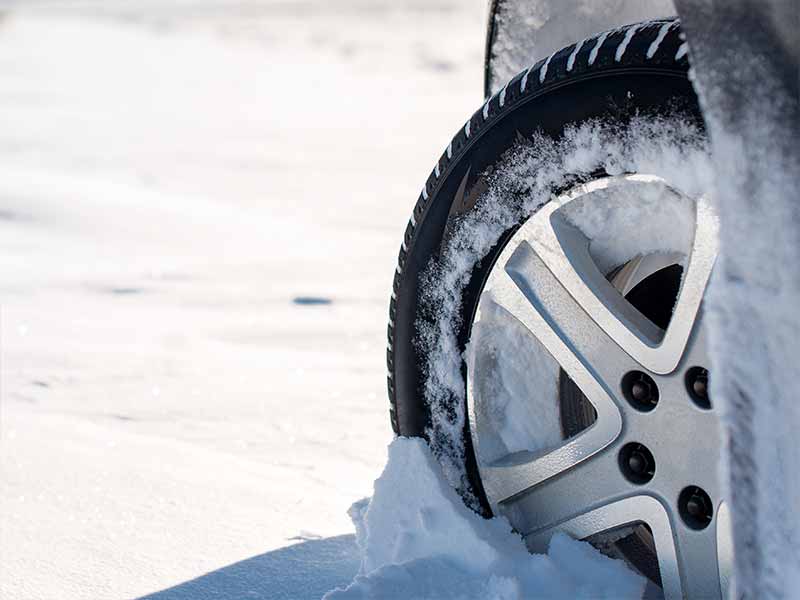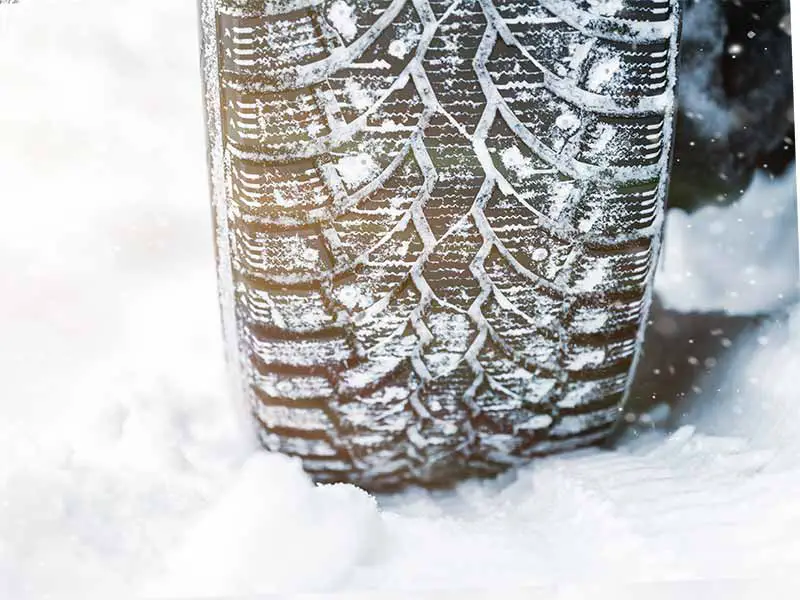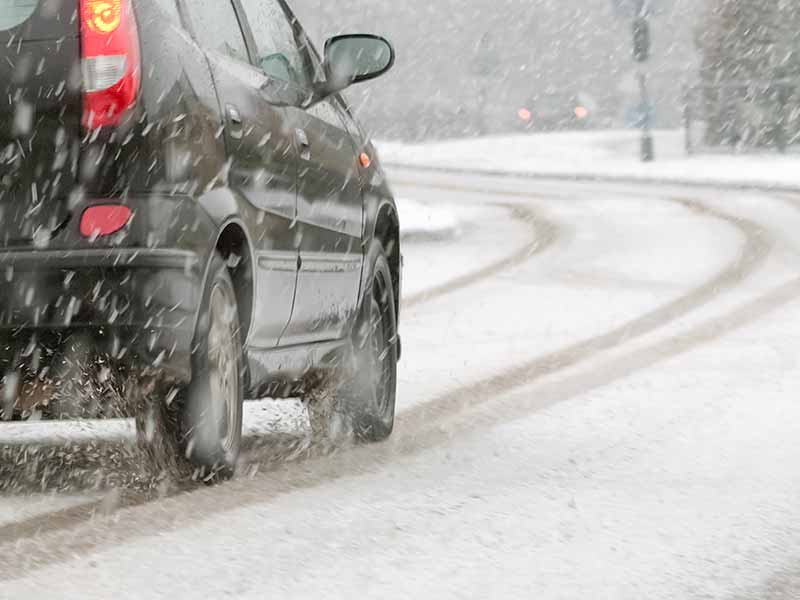Did you ever find yourself staring at a snowy road ahead, with your hands firmly gripping the steering wheel, and wondered: “Is my car up for this?” It’s a thought that often plagues us during those chilly months. Whether you’re new to driving in snow or an experienced ice road trekker, it’s crucial to know how well your car can tackle the wintry roads.
Is Front Wheel Drive Good In Snow?
Front-Wheel Drive (FWD) performs reasonably well in snow due to the weight of the engine being over the drive wheels, providing better traction. However, All-Wheel Drive (AWD) can offer superior handling in severe snowy conditions, as power is distributed to all wheels.
In this article, we’ll be taking a deep dive into the world of drive types – Front-Wheel Drive, Rear-Wheel Drive, and All-Wheel Drive – and their performance in snowy conditions. We’ll explore whether it’s safe to drive a FWD car in the snow, compare AWD and FWD performance, and discuss the vital role of winter tires. We’ll also guide you in deciding what drive type might be the best for your snow escapades, considering various factors like location, driving needs, and budget.
Let’s take a closer look.

Understanding Drive Types
Let’s dig into the three big players in the car world when it comes to getting your vehicle moving: Front-Wheel Drive (FWD), Rear-Wheel Drive (RWD), and All-Wheel Drive (AWD). Each has its own quirks, and we’re going to make things super clear, so you get it all.
Front-Wheel Drive (FWD)
When you pedal a bike the back wheel starts turning. Front-Wheel Drive is like the opposite of that. In a front-wheel drive car, the engine power goes straight to the front wheels, making them the big bosses when it comes to pulling your car forward. It’s like they’re doing all the hard work while the rear wheels are just along for the ride.
Here’s the quick run-down on the pros and cons of a front-wheel drive vehicle:
- Pros:
- Lighter Load: Because the engine and drive wheels are at the front, FWD cars are typically lighter. This is like going to a tug-of-war game with a lean but strong team. It’s often easier to get the car moving, especially in slippery conditions.
- Economical: FWD cars are usually more affordable and have better fuel economy. That’s like more road trips with less cash!
- Cons:
- Less Balance: FWD cars might not handle as well in high-speed or sharp-turn situations because of the weight distribution. It’s kind of like trying to balance on a see-saw when most of your weight is at one end.
Rear-Wheel Drive (RWD)
Now let’s switch gears and talk about Rear-Wheel Drive. With RWD, it’s the back wheels that get the engine power and do all the pushing.
Here’s the scoop on the benefits and drawbacks of a rear wheel drive vehicle:
- Pros:
- Better Balance: With RWD, weight is distributed more evenly. This is like perfectly balancing that see-saw, and it can lead to smoother handling, especially at high speeds or in sharp turns.
- Ruggedness: RWD is often used in trucks and sports cars because it can handle a lot of power and weight. This is like having a heavy-duty team in that tug-of-war game!
- Cons:
- Slippery Conditions: RWD cars can be trickier to handle in slippery conditions like rain or snow because the vehicle’s weight isn’t over the drive wheels.
All-Wheel Drive (AWD)
Instead of just powering the front or rear wheels, AWD sends power to all four wheels. This is like having four friends, each grabbing a corner of a heavy table to move it together.
Check out the cool parts and the not-so-cool parts about AWD:
- Pros:
- Traction: AWD can provide better traction in tricky conditions, like snow or off-roading. That’s like wearing your best gripping shoes when it’s icy outside.
- Versatility: AWD vehicles can handle a variety of situations well, from highway cruising to off-roading.
- Cons:
- Weight and Cost: AWD systems are heavier and can make the car more expensive to buy and less fuel-efficient. It’s like carrying a heavy backpack; you’ve got everything you need, but you might get tired faster!

Evaluating Drive Types in Snowy Conditions
Alright, we’ve chatted about how different drive types work. Now let’s talk about how each handle when the fluffy white stuff starts falling. We’ll look at the Front-Wheel Drive (FWD), Rear-Wheel Drive (RWD), and All-Wheel Drive (AWD) to answer that burning question – “Which one is the best in snow?”
Is Front-Wheel Drive Good in Snow?
When Mother Nature turns everything into a winter wonderland, your front-wheel drive car may feel right at home. With the engine power being sent to the front wheels, which are also steering the car, you get a double dose of control. This makes FWD vehicles pretty reliable for everyday driving in snowy conditions.
And if you’re wondering about uphill battles, FWD cars do pretty well. Remember, most of the car’s weight is over the front wheels, which can help with traction. Think of it as having your two strongest friends at the front when you’re trying to push a car uphill. They’ll dig in and pull the rest of the team along.
But remember, this doesn’t mean FWD cars are invincible in snow. They might struggle in really deep snow or icy conditions where extra traction is needed.
Is Rear-Wheel Drive Good in Snow?
Now, what about RWD in snow? Well, if FWD is like your friends at the front pulling everyone along, RWD is like having your strong pals at the back pushing.
In light snow, a RWD vehicle can do okay, but when the snow gets heavy, it could be a different story. The main issue is the lack of weight over the drive wheels at the back. Think of it as trying to push that car uphill, but your friends at the back are slipping because they’re not able to get enough grip on the road.
So, RWD cars can be a bit challenging in the snow, but with careful driving and the right tires (more on that later), they can still get the job done.
Is All-Wheel Drive Good in Snow?
When it comes to the MVP of snowy conditions, many people point to All-Wheel Drive. Remember, AWD is like having all your friends work together to move that heavy table. In snowy conditions, AWD systems send power to the wheels with the most grip, helping to maintain traction.
This can be a big plus when you’re facing snowy or icy roads, whether they’re flat or uphill. It’s like having four-wheel snow boots for your car! But remember, while AWD can help you get moving and keep going in the snow, it doesn’t help you stop any faster. That’s where good tires and careful driving come in.
Is AWD or FWD Better for Snow?
So, is AWD or FWD the winter champ? The answer is, “it depends.” AWD can offer better traction in more severe conditions and for off-road adventures. But FWD vehicles are generally cheaper, lighter, and more fuel-efficient, and they can handle most everyday winter driving conditions.
So, it’s a bit like deciding between snow boots and winterized sneakers. If you’re hiking in deep snow or ice, those boots (AWD) will serve you better. But for a regular snowy day in town, the sneakers (FWD) might be just fine.

The Role of Winter Tires
Think about how we humans switch from flip flops to boots when the weather gets frosty. Cars need the same kind of switch in their footwear, from all-season tires to winter tires, when the temperature drops and snow starts to fall.
Winter tires have special rubber compounds and tread patterns designed to grip the road better in cold, snowy, or icy conditions. It’s like how winter boots have deeper grooves and are made from materials that can stand up to the cold.
Here’s a quick overview of how winter tires help with different drive types:
- FWD: Winter tires can significantly improve traction, handling, and braking in snowy conditions for front-wheel drive vehicles. It’s like giving your front wheels a set of claws to dig into the snow.
- RWD: For rear-wheel drive vehicles, winter tires are pretty much essential in snow. They help the rear wheels get better grip and reduce the likelihood of the back end of the car sliding out.
- AWD: Even though all-wheel drive vehicles handle well in snow, they also benefit from winter tires. Remember, while AWD helps you go, winter tires help you stop.
Tips to Make Your FWD Better in Snow
If you’re rolling with a front-wheel drive vehicle, there are a few things you can do to get better performance in the snow. Of course, the number one tip is to switch to winter tires for better traction. But there’s more:
- Drive Slow and Steady: It’s not a race, folks. Driving slower and avoiding sudden acceleration or braking can help maintain control in snowy conditions.
- Keep Your Distance: In snow, it takes longer to stop. So, keep a safe distance from the vehicle in front to avoid any bumper boomerangs.
- Know Your ABS: If your car has Anti-lock Braking System (ABS), knowing how it works can be helpful. In an emergency, you should press and hold the brake pedal. You might feel the brake pedal pulse (this is normal!), but the ABS will help you steer while braking.

Deciding the Best Drive Type for Snow
We’ve dug into how different drive types handle in the snow and the vital role winter tires play. Now let’s try to answer that million-dollar question – “What’s the best drive type for snow?”
Evaluation of Whether One Really Needs AWD in the Snow
Let’s get real for a moment. Yes, all-wheel drive is fantastic in snow. It’s like having an all-terrain vehicle ready to conquer snowy hills. But do you really need it? That largely depends on where you live and how you use your car.
If you live in an area where it snows heavily for a big chunk of the year, or you love to hit the slopes every winter weekend, then AWD might be worth it. But for city dwellers where snowfall is moderate and roads are regularly cleared, a front-wheel drive vehicle with a good set of winter tires can handle most winter driving situations.
Factors to Consider When Choosing the Best Drive Type for Snow
Choosing the best drive type for snow isn’t just about which one performs best in a blizzard. It’s about considering your driving needs, budget, and personal preferences. Here are a few things to think about:
- Location: Do you live in a region with lots of snow or just occasional flurries?
- Driving Needs: Do you have to drive up steep hills or on unplowed roads often?
- Budget: Can you afford the extra cost and fuel consumption of an AWD vehicle?
- Vehicle Type: Do you prefer driving a compact car, an SUV, or a truck? This can affect the drive types available to you.
- Safety: How confident and safe do you feel driving in snow with each type of drive?
Final Thoughts on What Drive Type is Best for Snow
After considering all of the above, the final verdict is that the best drive type for snow can vary. For some, an AWD vehicle might be worth the extra cost for the added traction and peace of mind. Others might find a FWD or even a RWD vehicle with winter tires does the job just fine.
Resources
Below are some links you may find helpful when learning about tires
- Is font-wheel drive good in the snow? – Capital One
- All-wheel-drive vs front-wheel-drive in snow: Which one is better – Shift
Final Thoughts
Driving in snow doesn’t have to be a white-knuckle experience if you understand how your vehicle’s drive type can impact its performance. Front-Wheel Drive (FWD) cars, with their engine weight providing traction to the driving wheels, perform decently on snowy roads and hills for everyday driving. On the other hand, All-Wheel Drive (AWD) vehicles shine in more severe conditions, delivering power to all wheels and offering superior handling.
But the drive type isn’t the be-all and end-all for safe snow driving. Equip your vehicle, whether FWD, RWD, or AWD, with winter tires for the best performance. And remember, the best drive type for you depends on your individual needs and circumstances – your location, driving requirements, budget, and more. Whichever you choose, drive cautiously and be safe.
Good luck and happy motoring.




